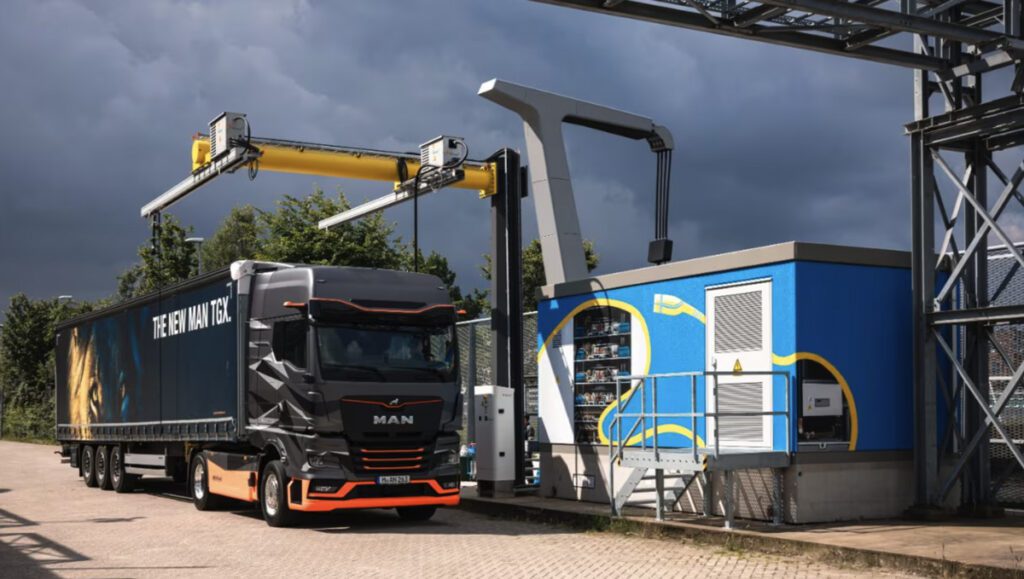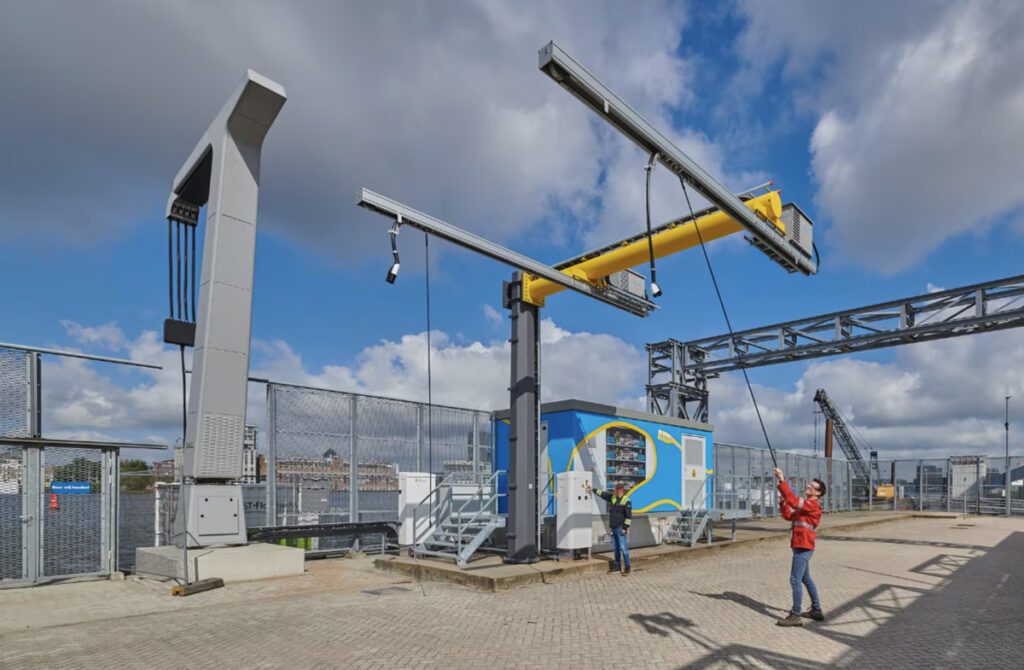Shell has deployed a self-developed megawatt charger for dual use by both electric trucks and waterborne vessels at the company’s Energy Transition Campus Amsterdam (ETCA), a facility where the oil giant demonstrates current energy technologies.
The charging station uses the Megawatt Charging System (MCS), a standard for charging heavy-duty EVs that was developed by CharIN. MCS is theoretically capable of delivering up to 3.75 megawatts of power—Shell says its new charger delivers about one megawatt.
Shell’s new MCS charging station is equipped with two separate charging arms. One rotatable arm is dedicated to electric vessels, and the other serves electric trucks and buses. Each charging arm also includes a CCS2 plug. Shell says the charger is ready for use, and vehicles and vessels with megawatt charging capability can visit by appointment.



The megawatt charger is connected to ETCA’s microgrid, which demonstrates integration among energy supply, energy storage and energy demand. The ETCA microgrid includes 3,600 rooftop solar panels, stationary battery storage, 119 EV chargers and a hydrogen electrolyser.
“We want to help decarbonize our customers in the logistics sector,” says Hilmar van den Dool, General Manager eMobility at Shell. “In addition to our investments in biofuels and LNG, we also invest in electric mobility. There are not that many electric trucks and vessels yet [sic], so with this we’re investing ahead of the market that is growing quickly.”
“We believe this solution will be helpful for shipping companies that control and operate logistics businesses across the supply chain, and often have facilities that serve both waterside and landside,” said Melissa Williams, President of Shell Marine. “The megawatt charger also offers the flexibility to charge a wide range of inland and port vessels such as barges, tugboats, service vessels and ferries.”
Source: Shell